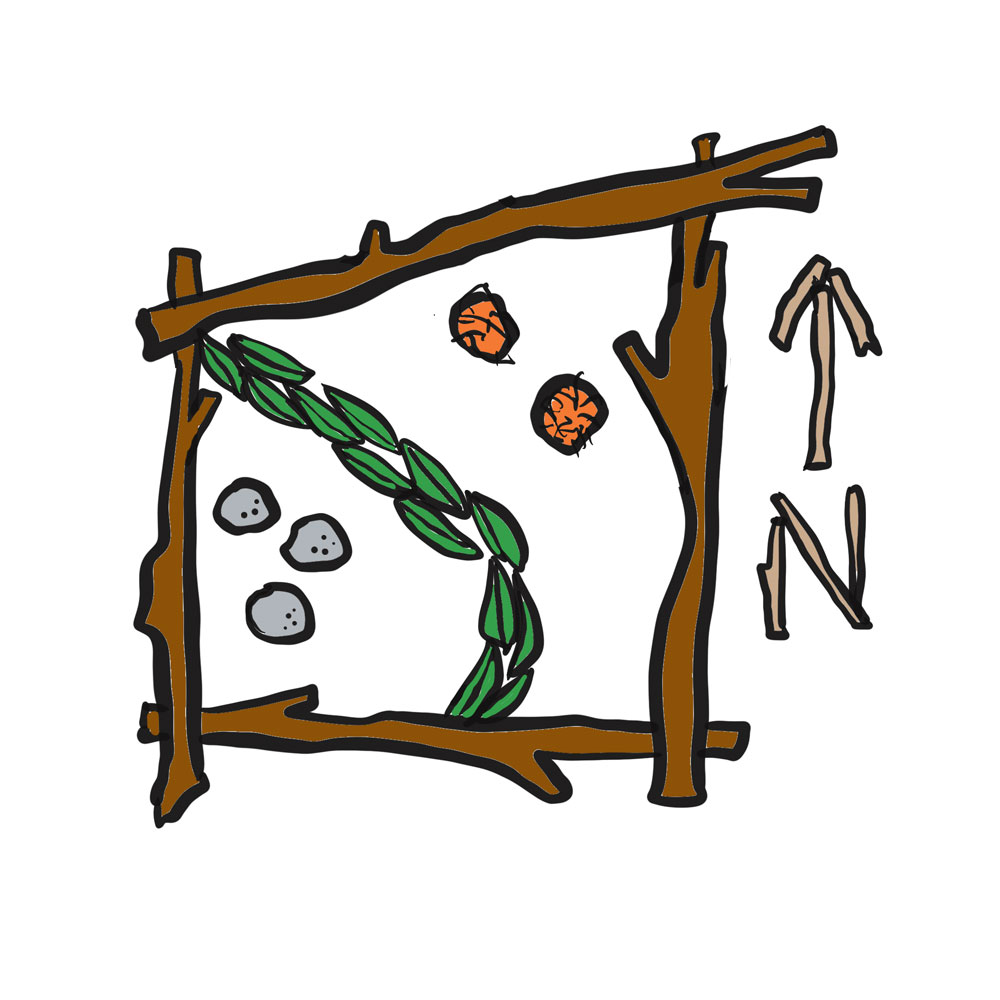It’s time to listen
Have you ever watched a kangaroo in the wild and noticed how its ears are constantly swivelling around listening to sounds in all directions? Active listening is an very important outdoor survival and awareness skill and we will show you how it works.
In this activity you’re invited to tune into the sounds in the landscape around you from all directions - North, South, East, and West. If you don’t know where these directions are, think about what time of day it is and where the sun rises (hint: East) and sets (hint: West), or quickly check the compass on your phone, or just listen to the sounds to your left, right, behind and in front of you.

- Close your eyes if you feel comfortable to, notice your body and your breathing. Take a few deep breaths to help you relax.
- Then, tune into the sounds in the direction of North. Let your awareness travel across the landscape in the direction of North and listen for the quietest sound. Are there natural sounds? Human sounds? Is there a rhythm or a melody to these sounds? What birds can you hear? Spend at least 30 seconds listening to these sounds.
- Next, turn your awareness to the East. Follow the steps above.
- Now, to the South. What is the quietest sound you can hear in the South? Repeat steps above.
- And finally, the West. Listening for the quietest sound and repeating the steps above.
- What is the closest sound you can hear to you right now?
- For a few moments, increase the sound of your own breath and add your sound to this landscape.
Now open your eyes. What did you notice as you were listening? What did you hear? Share what you noticed with a friend, parent or in your journal.
Listening like a kangaroo
Prey animals like kangaroos and horses are some of the best listeners around. Their ears are constantly swivelling around to alert them to any possible danger, particularly, predators lurking in the bushes. Their ears move independently so they can even have one ear facing forwards and one ear facing backwards, listening to sounds in front and behind them at the same time.
Let’s put our kangaroo ears on and see if this improves our hearing.
Cup your hands around your ears to help catch and channel the sound into your ears. First try with both hands cupped and facing forwards. What can you hear? Are the sounds in front of you louder? Now turn your hands so they’re facing backwards. Do you hear the sounds behind you more loudly? Now try having one hand facing forwards and one hand facing backwards. How does that change what you hear?